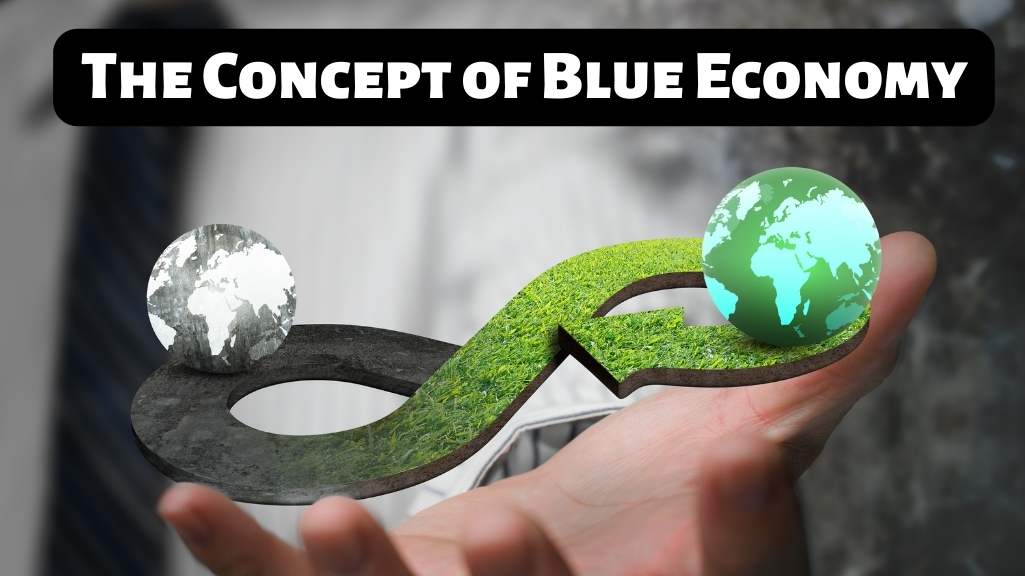The Concept of the Blue Economy
James Bond
. 3 min read
The term "Blue Economy" has been used more frequently over the past few years. Organizations such as the United Nations, the European Union, the Organization for Economic Cooperation and Development, and the World Bank have all made use of the term to describe the relationship that exists between economics, sustainability, and the ocean. The term "sustainable ocean-based economy" (also known as "blue economy") is sometimes used interchangeably with the former. Blue economy is an economic term that is linked to exploitation and conservation of the maritime environment.

How significant is the ocean's role in the economy of our country?
In addition to playing an essential part in regulating the climate and the weather and providing essential ecosystem services, the ocean is also essential to the global economy. More than 90 percent of global trade is conducted via sea routes, and the ocean is a major employer of millions of people around the world. Additionally, the ocean serves as the backdrop for an ever-expanding variety of new economic activities and innovations that are all connected to the ocean.
Economics Benefits
According to the World Economic Forum (WEF), the oceans are the most valuable asset on Earth. Furthermore, their "natural capital" is enormous, as it contributes $70 trillion to the annual gross domestic product (GDP) of the entire world. According to the World Economic Forum (WEF), the value of the ecosystem services that are provided by oceans is $38 trillion annually.According to the World Economic Forum (WEF), the world's oceans are responsible for 90 percent of the volume and 40 percent of the value of global trade. More than 3.2 billion people call an area that is less than 100 kilometers (60 miles) from the coast home.
The gathering of resources still alive
The most common application of ocean resources is fishing, which provides approximately 15% of the total protein consumed on the planet. Aquaculture, on the other hand, is responsible for approximately 20% of the total amount of fish that is harvested. Due to the fact that conventional fish sources are becoming scarce as a result of overfishing and that the world population requires additional protein sources, a greater proportion of seafood is now being produced through the process of aquaculture. The advancement of marine biotechnology has made it possible for the pharmaceutical and chemical industries to make greater use of the resources that are found in aquatic environments.
Extraction of resources that are not living
It is only fairly recently that people have begun to harvest energy and mineral resources from the oceans. Mining of the seabed is a developing field of technology that allows for the extraction of minerals from nodules. Offshore platforms, most of which are located on the continental shelf and within EEZs, are used to extract oil and gas. Additionally, the oceans are starting to be utilized as a source of renewable energy, particularly in the form of offshore wind farms and the utilization of tidal energy.
Maritime transport
The United Nations Conference on Trade and Development (UNCTAD) reports that maritime transport continues to be the backbone of global trade and manufacturing supply chains. According to UNCTAD (2019), more than a quarter of the world's total trade volume is completed via ocean transport. In addition, maritime transport is responsible for approximately 70–80% of the value of total trade while handling approximately 80% of its volume.
The significance of oceans in the production of medicines and the stimulation of the economy
Additionally, marine organisms are an abundant source of nutraceuticals, making them possible candidates for the treatment of a number of different human diseases. Microbes constitute the primary research interest in contemporary marine pharmacology. One example of this is the identification of new pharmaceutical candidates derived from marine microbes. Since the ocean has more than 13,000 described molecules, of which only 3,000 are known to have active properties, it offers a wealth of opportunities for the discovery of new chemical compounds. Natural products found in marine environments are almost always secondary metabolites.
Summary
Oceans and coastal ecosystems that are healthy are not only essential to the growth of the economy and the production of food, but they also make an essential contribution to the fight against climate change on a global scale. "Blue carbon" sinks, which include mangroves, tidal marshes, and seagrass meadows, are able to sequester and store more carbon per unit area than terrestrial forests. The oceans are warming, which, in turn, is causing the oceans to become more acidic, which threatens the oceans' ability to maintain their equilibrium and their productivity.
More Stories from
The Vital Distinction between Renewable and Non-Renewable Sources of Energy
This article provides a concise overview of renewable and non-renewable energy sources, highlighting their characteristics, benefits, and challenges.
Turbocharger: Function, Components, and Advantages and Drawbacks of Forced Induction
This article discusses the function and components of a turbocharger, which is a type of forced induction used to increase the power of an engine.
Understanding AC and DC: The Fundamentals of Electric Power
This article provides a concise overview of Alternating Current (AC) and Direct Current (DC), the two fundamental types of electrical power.
The Mysteries of the Brain: Recent Discoveries in Neuroscience
From the brain's remarkable adaptability to the profound link between the gut and brain, explore the cutting-edge findings shaping our understanding of cognition and behavior.
Defense Advanced Research Projects Agency (DARPA): Pioneering Innovation in Defense Technology
This article provides a concise overview of the Defense Advanced Research Projects Agency (DARPA), its mission, and its key contributions to revolutionizing defense technology.






.png?width=40&aspect_ratio=1:1)

.png?width=40&aspect_ratio=1:1)




